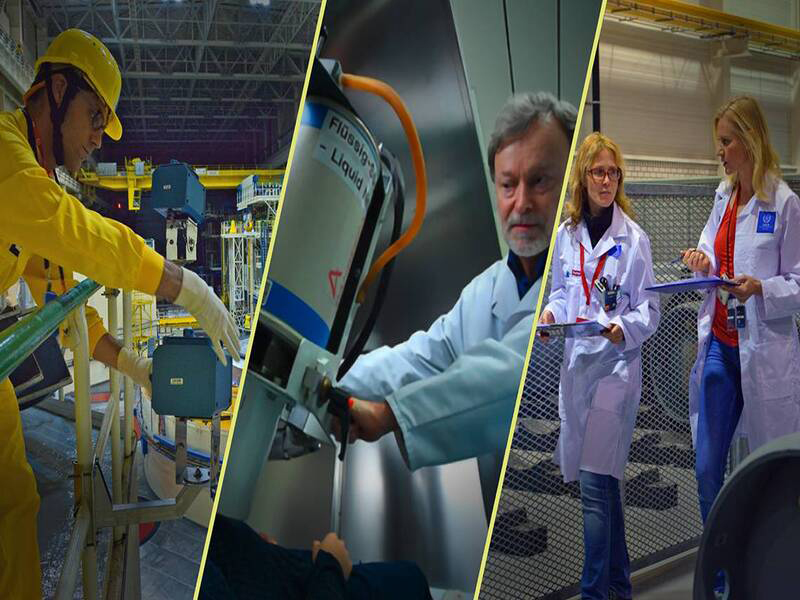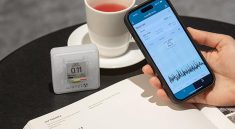ABGX – Important Aspects in Radiation Monitoring and Personal Protection Management
In today’s advanced medical and industrial fields, radiation plays a vital role in diagnostics, therapy, and material analysis. However, exposure to ionizing radiation brings potential health risks if not managed properly. To maintain safety, institutions must follow strict guidelines. These guidelines include radiation monitoring, personal protection, and regular risk assessments.
This article explores the important aspects in radiation monitoring and how these procedures contribute to maintaining safety in radiological environments. News platforms like ABGX and abgx.net often highlight real cases that show how crucial these systems are in hospitals, laboratories, and nuclear industries.
“Read more : First Aid to Save Yourself If Exposed to Nuclear Radiation Incident, Self Protection Management“
Why Radiation Monitoring is Essential
Radiation monitoring helps detect, measure, and evaluate exposure levels. This ensures workers remain within permitted safety limits. Occupational exposure may result from medical X-ray machines, radioactive isotopes, or nuclear reactors.
The most important aspects in radiation monitoring involve using appropriate devices. These include dosimeters, area survey meters, and portal monitors. When used correctly, they help protect both personnel and the surrounding environment.
According to safety experts featured on ABGX, early detection is a frontline defense in radiation protection. By continuously assessing radiation levels, institutions can act quickly to prevent overexposure.
Common Types of Radiation Monitoring Devices
There are several tools that assist in radiation monitoring. Understanding each tool’s purpose supports better safety practices.
1. Personal Dosimeters
These devices are worn by radiation workers. They measure cumulative exposure over a specific period. Some examples include:
- Thermoluminescent Dosimeters (TLDs)
- Electronic Personal Dosimeters (EPDs)
These tools provide real-time feedback and ensure workers do not exceed dose limits.
2. Area Monitors
These devices track radiation levels in a specific space. If radiation spikes, an alarm system warns everyone nearby. Hospitals and research facilities use these in treatment rooms, labs, and waste storage areas.
3. Portal Monitors
Used mainly at checkpoints or facility exits, these monitor individuals for contamination. They are essential in nuclear plants to prevent radioactive material from spreading.
abgx.net has published several technical insights on how advanced portal systems enhance operational safety during nuclear maintenance work.
Administrative and Technical Safety Measures
Radiation safety is more than just monitoring. It also requires strategic planning. This includes:
- Workplace zoning: Classifying areas based on radiation levels.
- Time management: Reducing exposure duration for personnel.
- Distance rules: Increasing the gap between sources and workers.
- Shielding: Using barriers like lead walls or mobile shields.
Facilities must also conduct regular audits and training to reinforce compliance. These administrative controls create a strong foundation for personal safety.
“Read more : Digital Musical Instruments: Technological Revolution and Innovation in the Music Industry“
Personal Protective Equipment (PPE)
When radiation sources are unsealed or in use, PPE becomes crucial. Workers may need:
- Lead aprons or thyroid collars
- Lead glasses
- Gloves and face masks (especially for radioactive dust)
Using proper gear not only protects organs from direct exposure but also prevents contamination. As reported by ABGX, many incidents of unnecessary exposure occurred due to incorrect PPE usage or lack of training.
The Role of Regulations and International Standards
Following international guidelines is vital. Organizations like the IAEA (International Atomic Energy Agency) and ICRP (International Commission on Radiological Protection) provide frameworks. These help countries establish laws and workplace policies.
Some core principles include:
- Justification: Any radiation use must offer more benefit than harm.
- Optimization: Doses must be kept “As Low As Reasonably Achievable” (ALARA).
- Dose Limitation: Ensures annual exposure remains within safe boundaries.
Countries with updated regulations tend to report fewer radiation-related accidents. This is why abgx.net regularly emphasizes the importance of adhering to global best practices.
Emergency Response and Incident Reporting
Every radiation-handling facility must prepare for emergencies. This includes having a:
- Radiation emergency response plan
- Trained crisis team
- Monitoring and decontamination tools
Any incident must be documented and analyzed. Lessons learned help improve safety protocols. In many real-world cases shared by ABGX, swift incident responses saved lives and avoided long-term damage.
Continuous Training and Awareness
A culture of safety must be reinforced through education. Radiation safety officers, medical staff, engineers, and lab workers all need updated training. Topics usually include:
- How to use dosimeters correctly
- Interpreting area monitor readings
- Responding to contamination alerts
- Proper PPE handling and disposal
Institutions should also simulate emergency drills. This ensures every worker knows what to do in case of accidental exposure.
Conclusion
Radiation provides many benefits, but safety should always be a top priority. The important aspects in radiation monitoring include not only device usage but also policy enforcement and safety culture.
By following best practices and remaining updated with information from sources like ABGX and abgx.net, professionals can reduce risk and protect lives. With the right tools, knowledge, and habits, safe radiation work environments are entirely possible.



